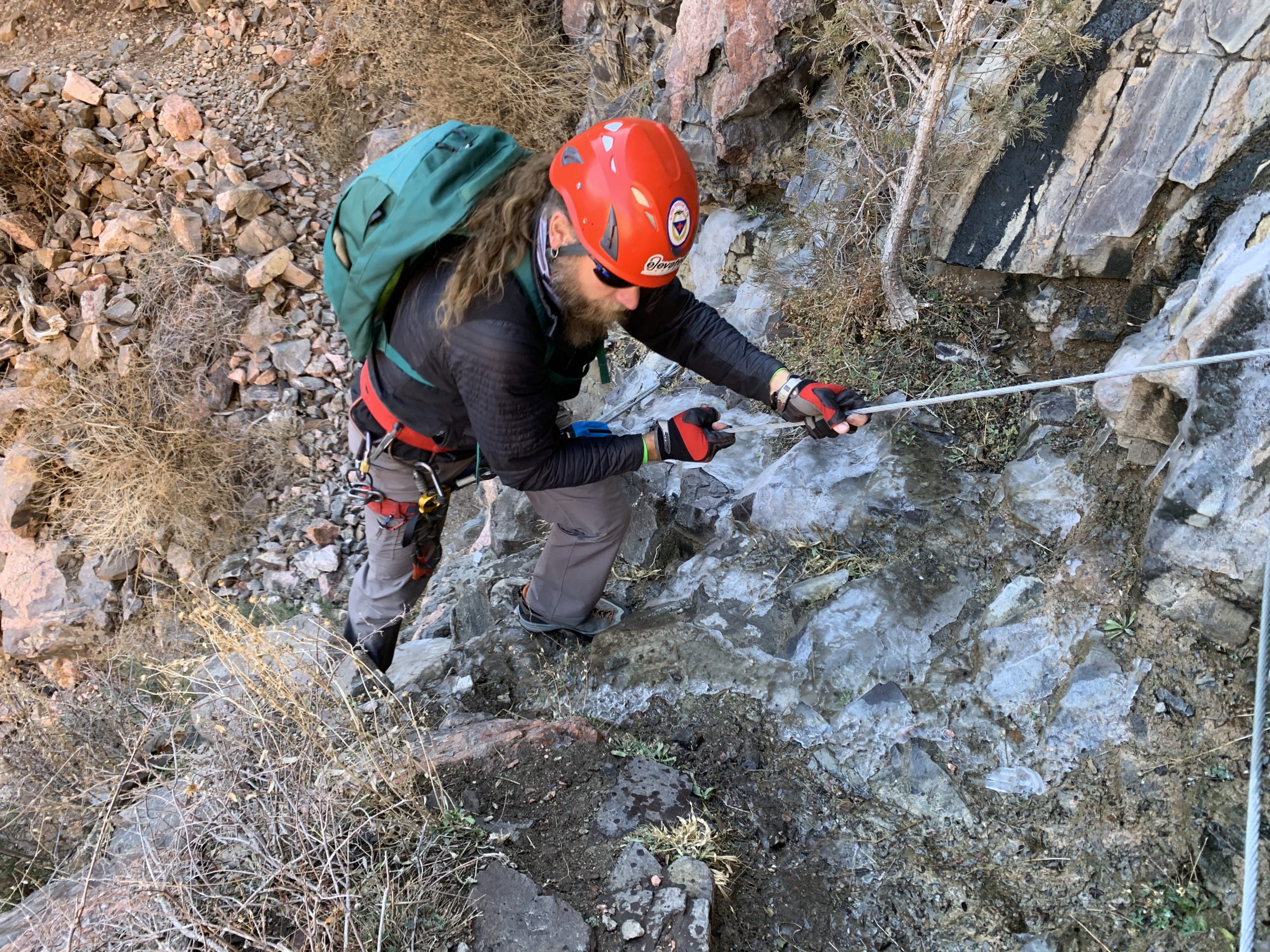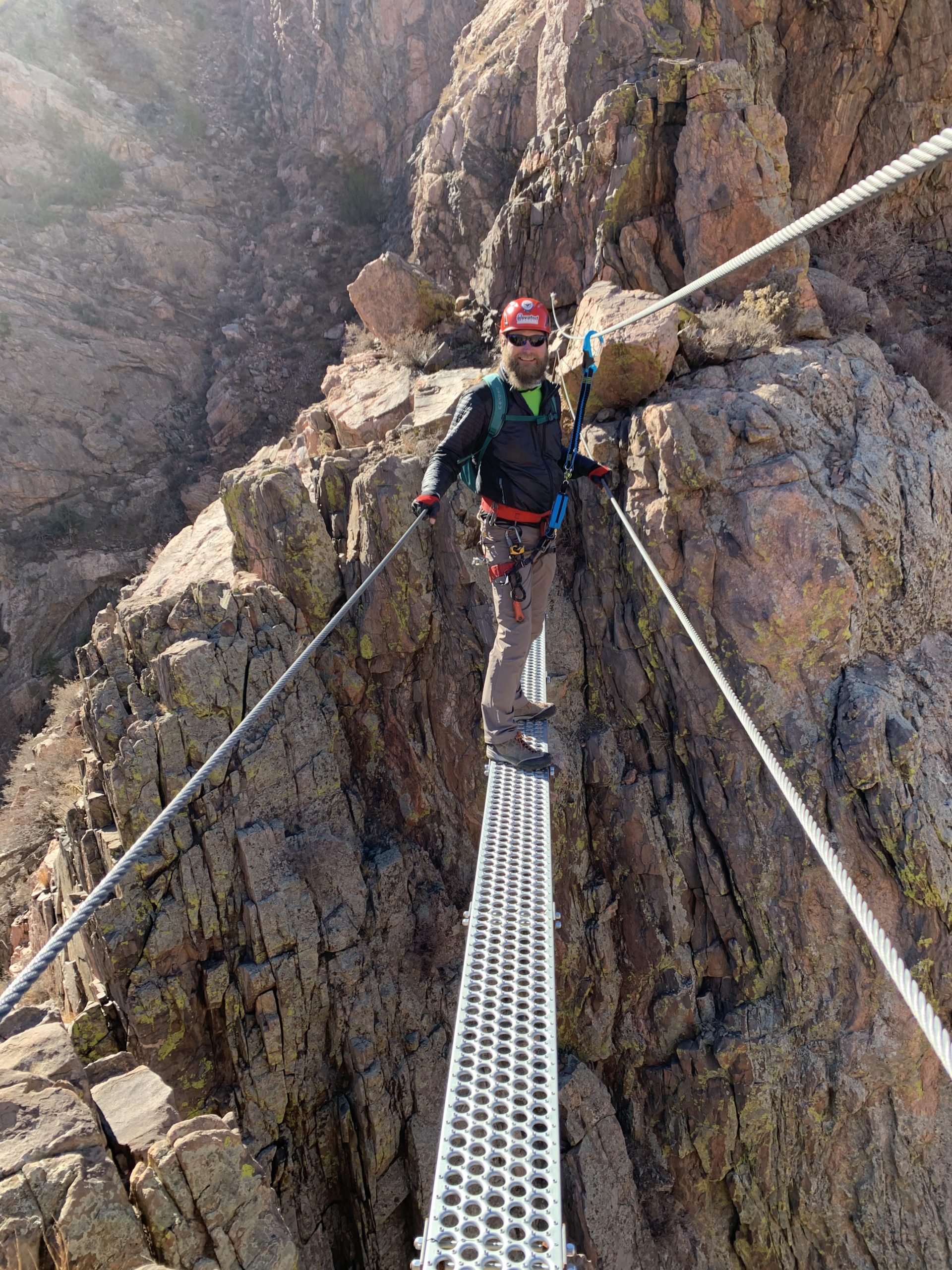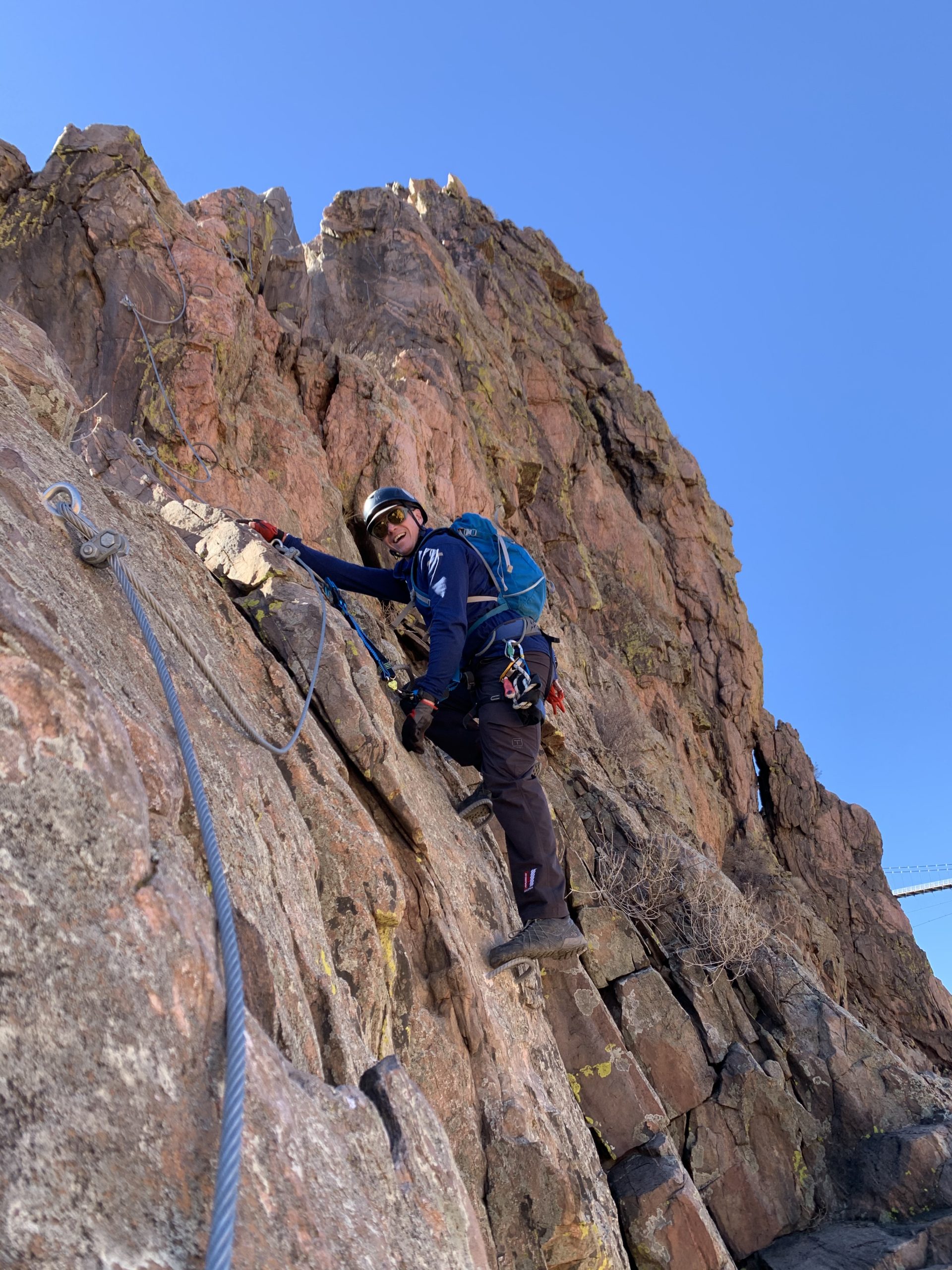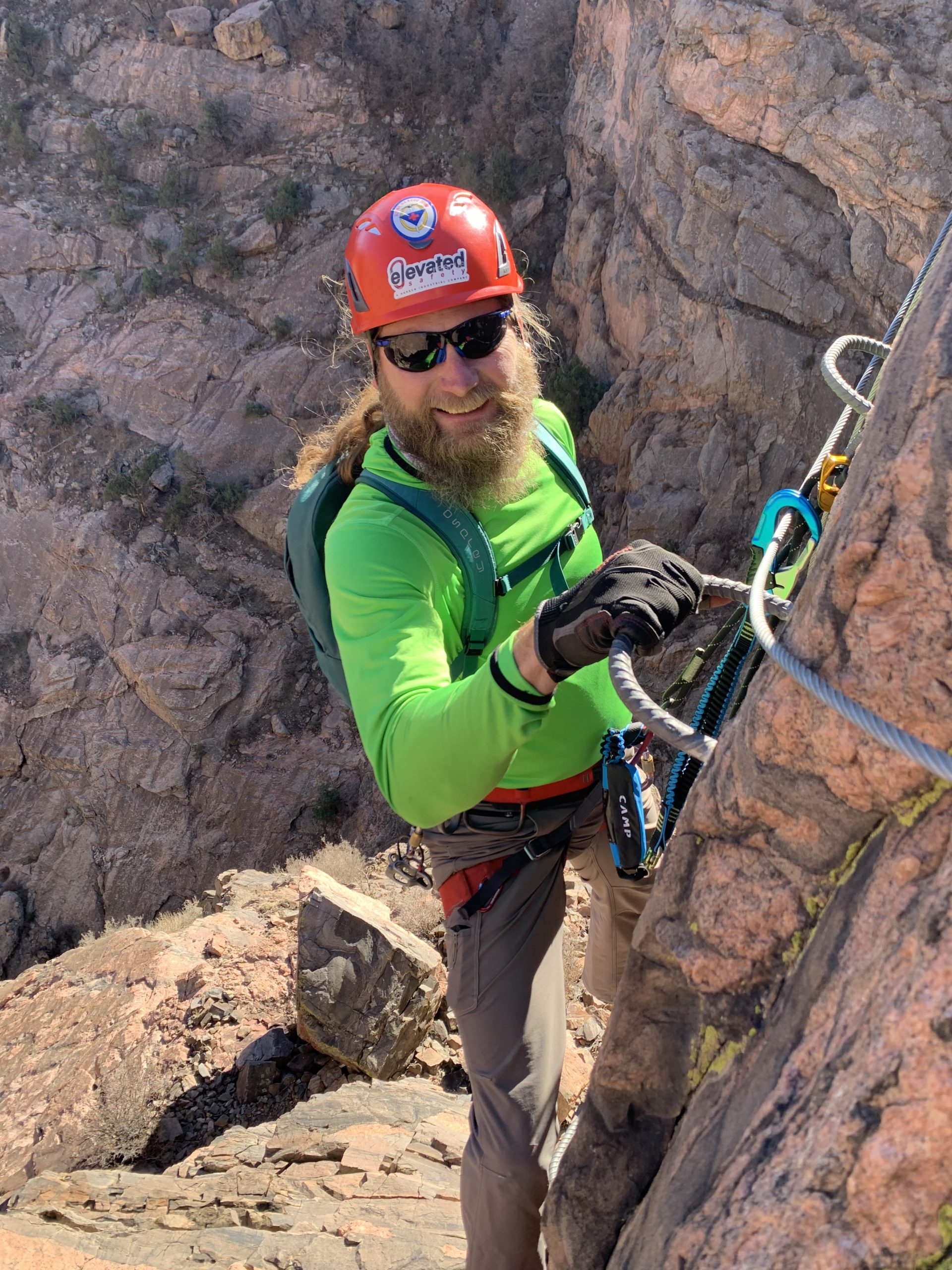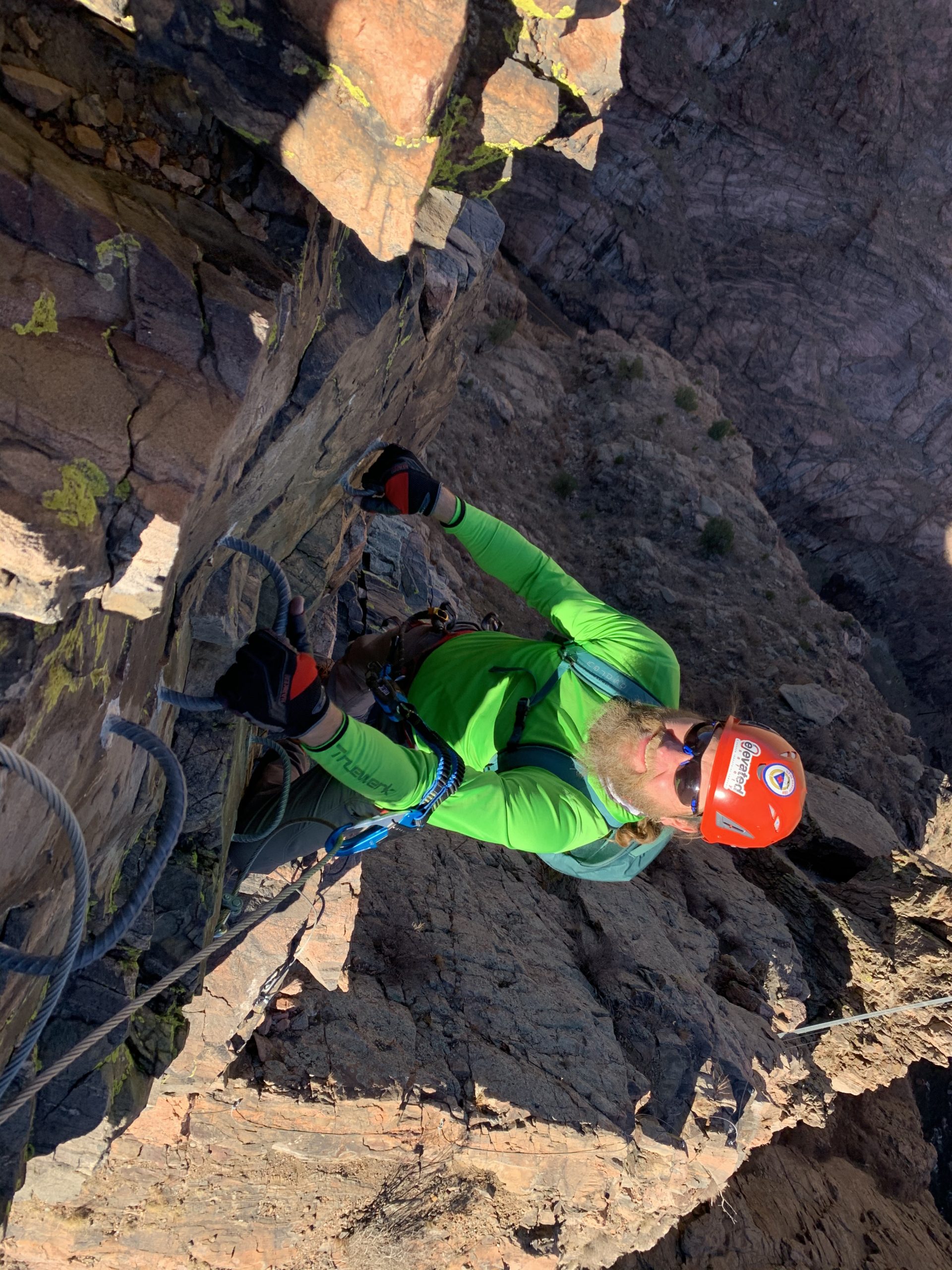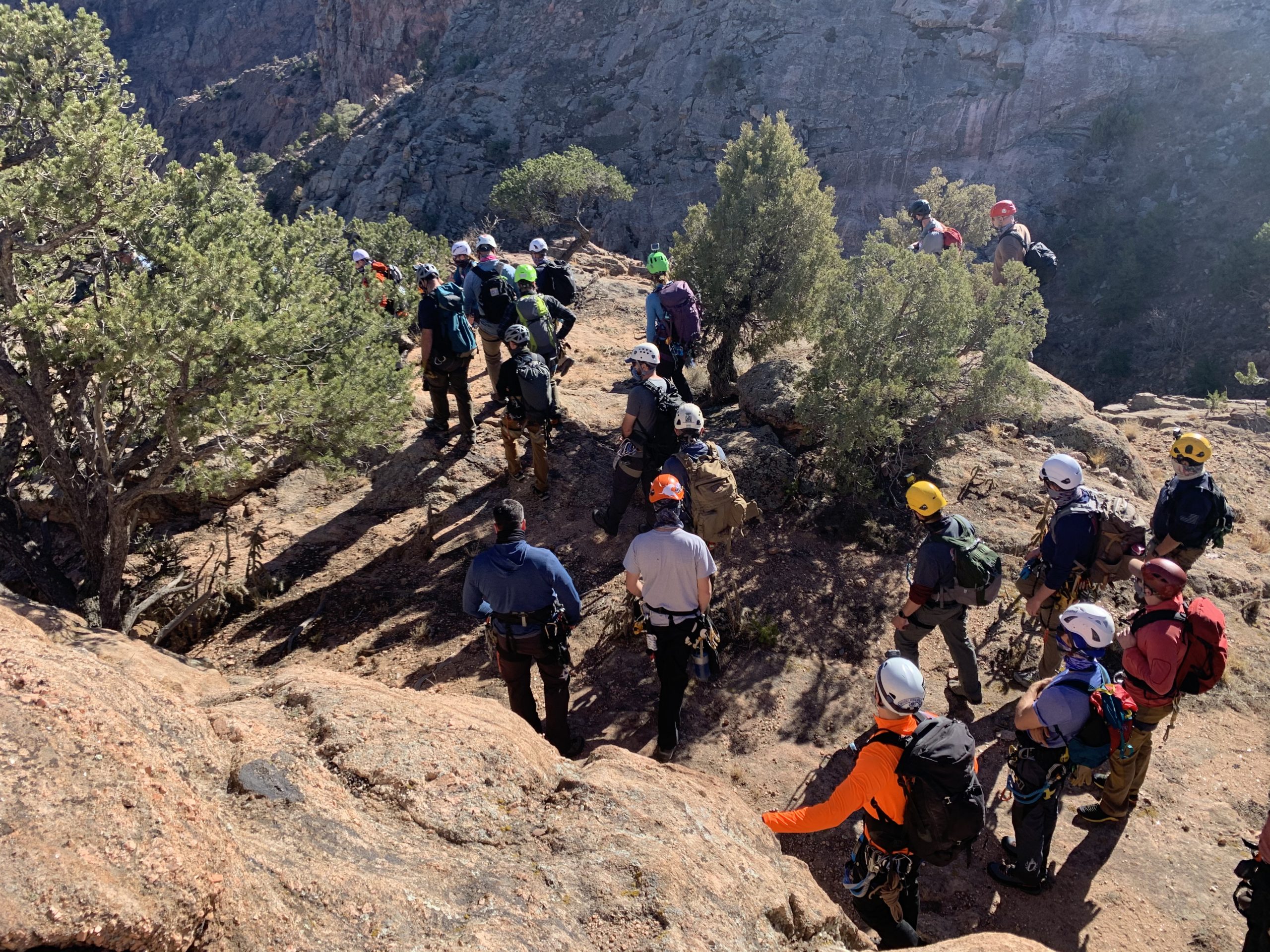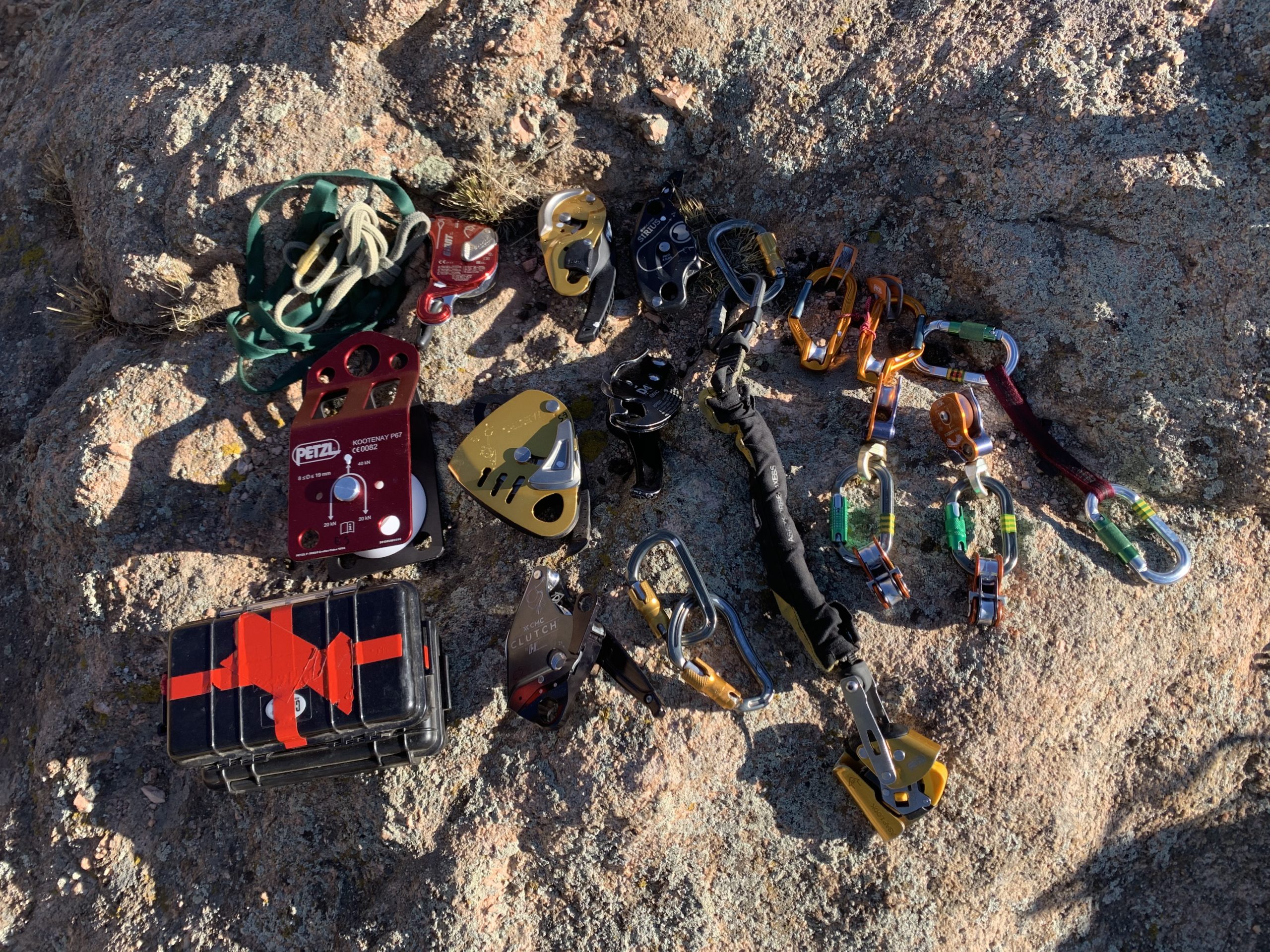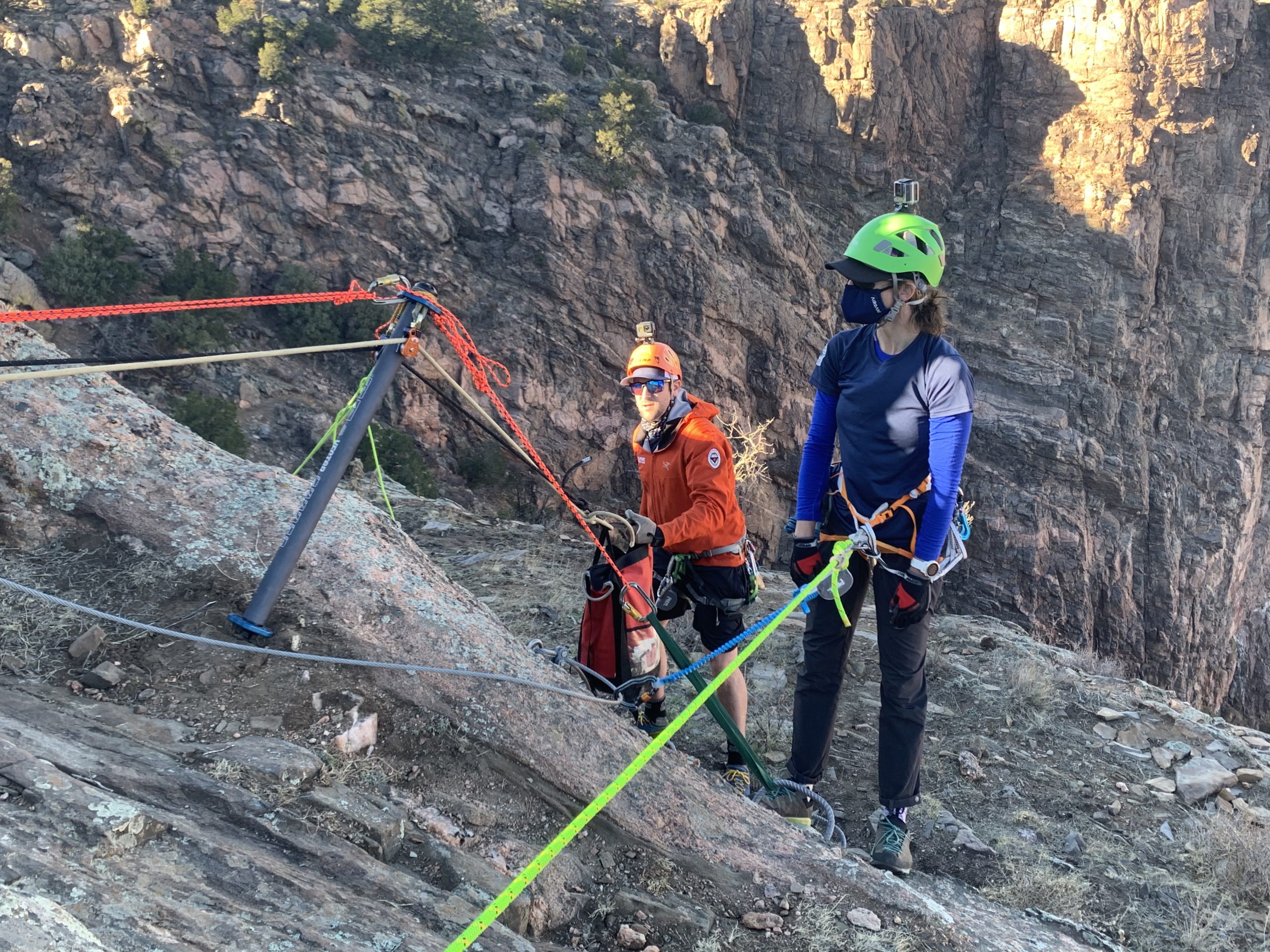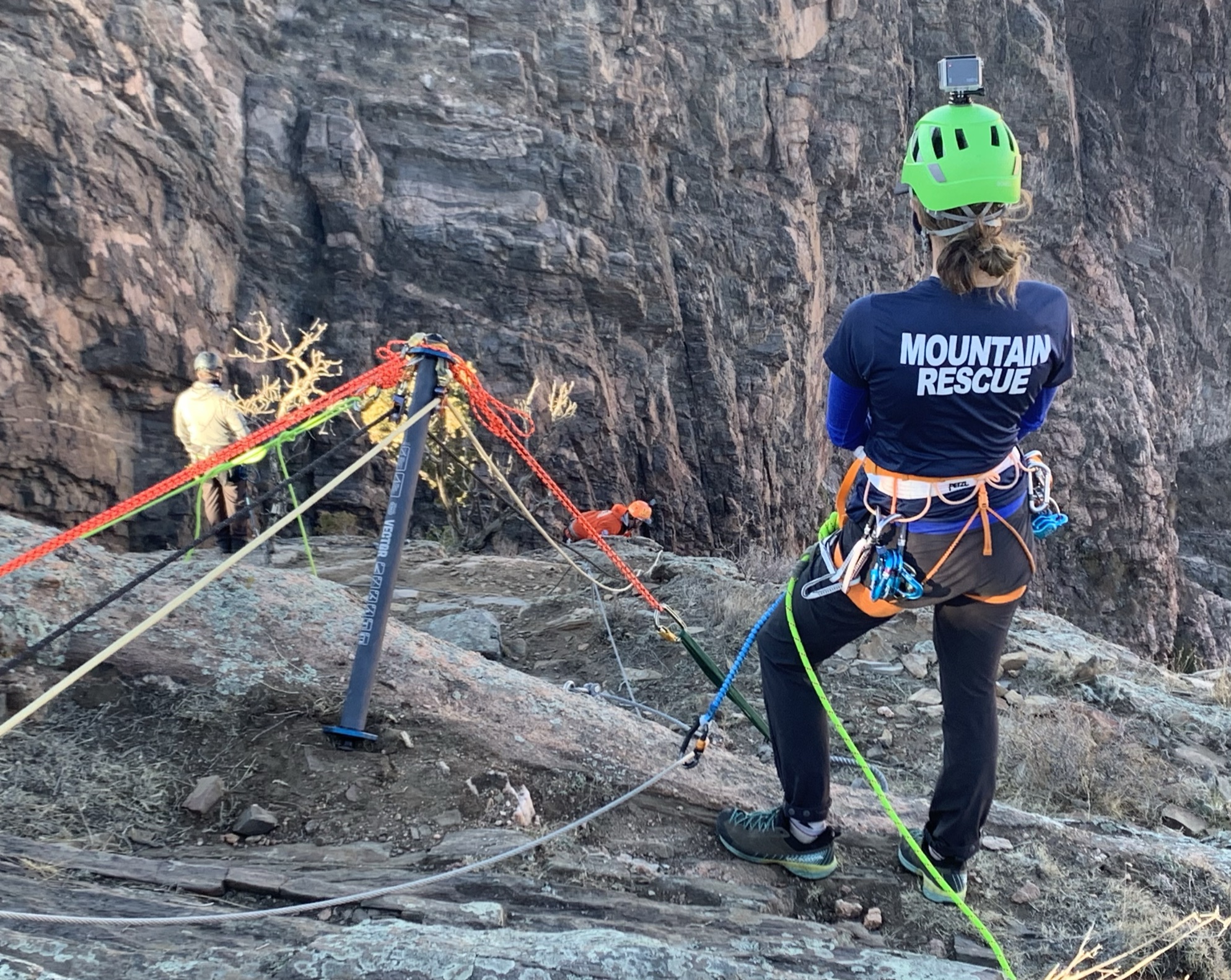So, just what the heck is Via Ferrata anyway? A type of obscure Italian pasta? The name of this year’s hottest modeling sensation from France? Tesla’s newest American sports car? No, non and nope.
Via Ferrata: A Little History
Via Ferrata, which is Italian for “the iron path”, is a form of climbing that was primarily born out of necessity in the Italian Dolomites during WWI. Installed and utilized by troops to access strategically important mountain passes, these routes used iron steps, handholds, ladders and cables, drilled into the rock to make rock climbing more like ladder climbing. After WWI and WWII, they gained in popularity with European alpinists who traded their rifles for harnesses and twin lanyards, and there are now more than 1,000 Via Ferrata climbs installed all over Europe.
And, in the last 10 years, the popularity of Via Ferrata climbing has spread throughout the U.S. West Virginia, Washington, Oregon, North Carolina, Utah, Colorado, Arizona, Wyoming, Kentucky and California all have Via Ferrata routes now. And each year, more and more locations are allowing them to be installed on public lands. Some are located in remote corners of the backcountry on private land that require guides, while others are located right in the middle of urban areas with unrestricted access to the public.
Climbing: It’s All Fun and Games Until…
Which brings us to the topic at hand: How does one go about rescuing a stuck or injured climber on a Via Ferrata? This was the question posed to Elevated Safety by Jeremy Boswell, the Safety and Operations Director for the Royal Gorge Bridge & Park in Canon City, Colorado in 2019, when they were preparing to open their new Via Ferrata attraction. The routes, engineered and installed by Adventure Partners, were built to exacting ASTM standards. As such, the state of Colorado mandated that a documented rescue plan had to be in place. Additionally, any company operating a licensed Via Ferrata attraction in Colorado must demonstrate a basic rescue in front of a state inspector, before they can open to the public. So we sat down, studied how the Euros did Via Ferrata rescues, crafted a realistic rescue plan for the Park, trained their guides and equipped them with the best gear for the job.
The RGB&P passed their test with flying colors, and their Via Ferrata attraction has since become wildly successful.
Via Ferrata Pro Rescue: Elevated Safety Style
In early 2020, Elevated Safety instructors sat down to figure out which specialty rescue courses we’d like to offer in the coming year. As far as we could tell, no one had ever offered an open enrollment Via Ferrata Pro Rescue Course for first responders in the U.S., so we decided to do it. And when we forged our partnership with the RGB&P Guides and Adventure Partners to host the first-ever open enrollment Via Ferrata Pro Rescue Course in November 2020, we were all excited to introduce the unique challenges of Via Ferrata to America’s rope rescue community.
We had ten instructors and two Via Ferrata guides teaching the 24 students, from across the country, for three jam-packed days of climbing and rescue scenarios. In keeping with Elevated Safety’s strict COVID-19 Training Policy, we utilized the Park’s movie theater to accommodate indoor social distancing, performed daily temperature checks, and required everyone to wear masks when within 6 feet of each other outside.
Day One was dedicated to introductions and getting the students out on the routes. Getting used to the extreme exposure of having your butt in the breeze, 900 feet above the Arkansas River, was crucial in getting the students comfortable with the rescues to come during our mock rescue scenarios. Trusting our CAMP and Petzl VF Lanyards made the climbs a lot less stressful.
Day Two was spent getting everyone hands on time with new tools and techniques. We ran stations on the following: Artificial High Directionals (CMC Vortex bipod and SMC Vector monopod, Sterling 5.9mm Powercord); lightweight rescue options (PMI 8mm Durashield dual main lines using Conterra Ti Scarabs, Petzl Microtraxions and Petzl Shunt); highlines with Sterling and Teufelberger 11mm ropes tensioned with Harken/CMC Clutches; Harken Industrial LokHead Winches on the new Tellumount Bracket versus mechanical advantage systems (using both the Petzl Maestro and the Clutch); patient packaging and litter movement with the Cascade Rescue two piece Ti Pro Series Litter on the Terra Tamer Wheel with Equalizer Handles and pull testing some of the anchors with Adventure Partners, as part of the Park’s first annual ASTM inspection. Whew.
Day Three we threw three, full mock rescue scenarios at the students. The students rose to the challenge and completed all the scenarios efficiently, and most importantly, safely.
Via Ferrata Pro Rescue Notes From The Field
- Though Via Ferrata routes are anchor-rich environments, load sharing anchor building skills are critical if you want to pinpoint fall lines and avoid a catastrophic single point of failure.
- USE ONLY LANYARDS AND POSITIONERS DESIGNED FOR VIA FERRATA CLIMBING. Knotted or girth hitched Dyneema slings are completely unacceptable and will fail at 40-60% of their MBS when shock loaded. Also, industrial fall arrest lanyards are too long and deploy at higher loads than twin shock absorbing lanyards created for Via Ferrata use.
- It’s usually easier and much safer to access the casualty from above or below by climbing the actual route instead of rappelling off-route through terrain that may have not been cleaned of rockfall.
- Advanced medical (even basic ABC’s are tough to perform on a suspended casualty) or mid-wall litter loads are typically not practical on VF routes. Casualty should first be moved to a safe area like a ledge or trail before attempting anything other than basic life-saving interventions.
- Not all Via Ferrata routes are created equal. If you have one in your response area, track down the installer to determine if a licensed PE engineered the route and if the route is installed and inspected to ASTM standards. 100% attachment at all times is required on routes that have been installed to the ASTM standard.
- Routes available to the general public may have climbers using non-compliant harnesses, lanyards and climbing without helmets. They may also be climbing above their ability and off-route. Plan accordingly.
2021 And Beyond
Look for an Elevated Safety Advanced Highline course at the Royal Gorge Bridge & Park and another Via Ferrata Pro Rescue course at the Gorge as well. Stay tuned to the Elevated Safety course calendar for details.
Special Thanks To
Elevated Safety proudly works hand in hand with the best names in the biz, and we couldn’t have hosted such a successful course without their help. So we’d like to thank the following companies for their support: Harken Industrial, Cascade Rescue, Petzl, CMC, CAMP, PMI, SMC, Sterling, Teufelberger, ClimbTech, Conterra, Rock Exotica and Kask.
If you are interested in learning more about any of the gear used during this course, contact our Gear Shop.
If you are interested in registering for an upcoming Via Ferrata course, visit our website.

